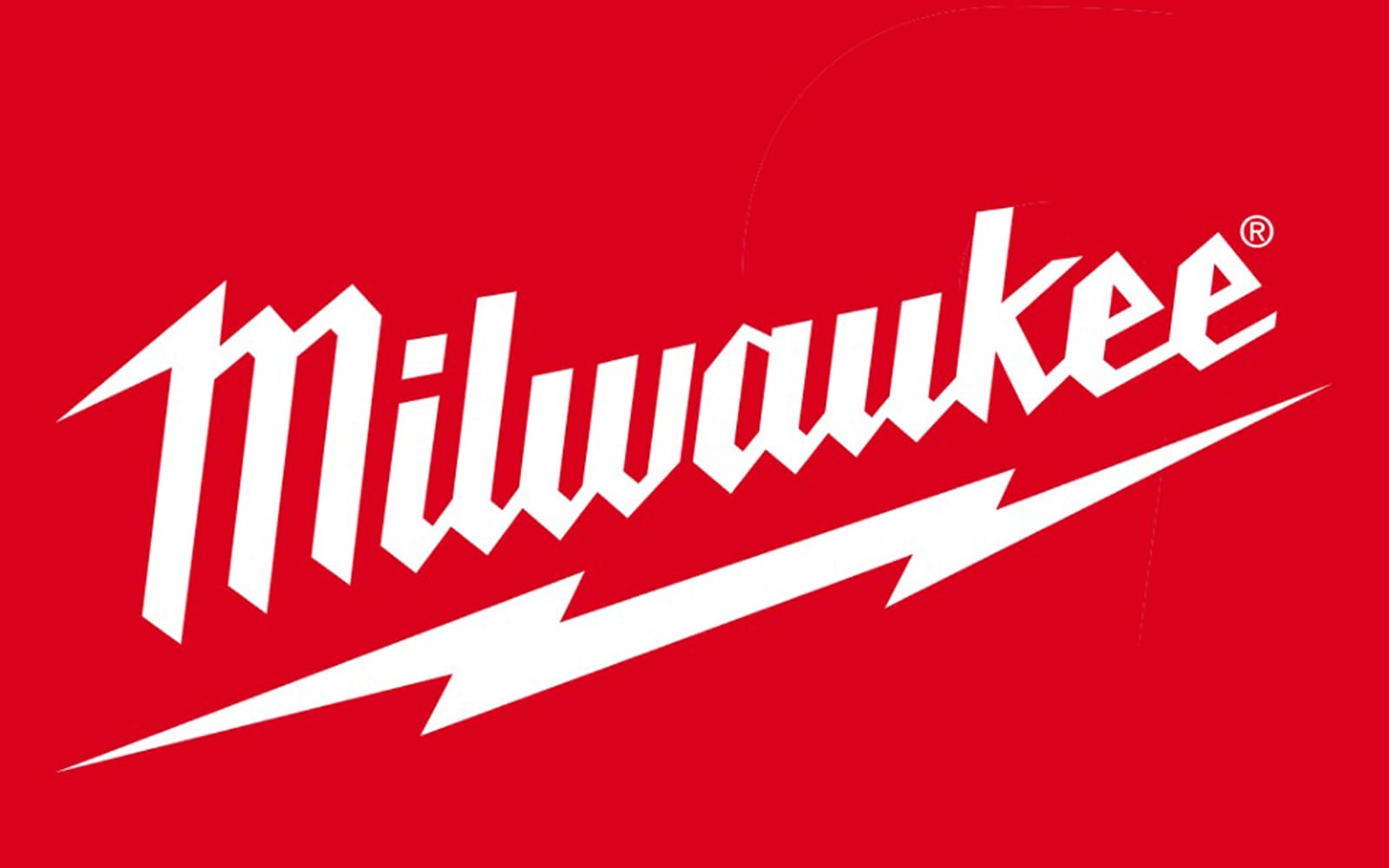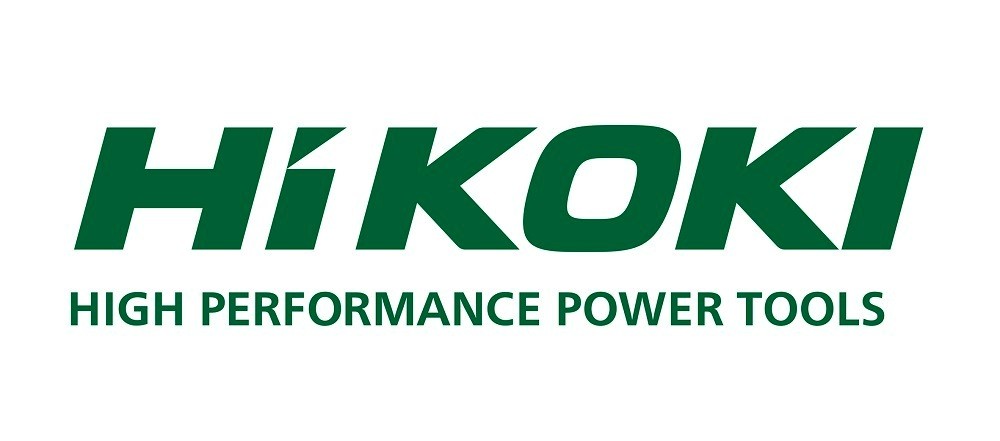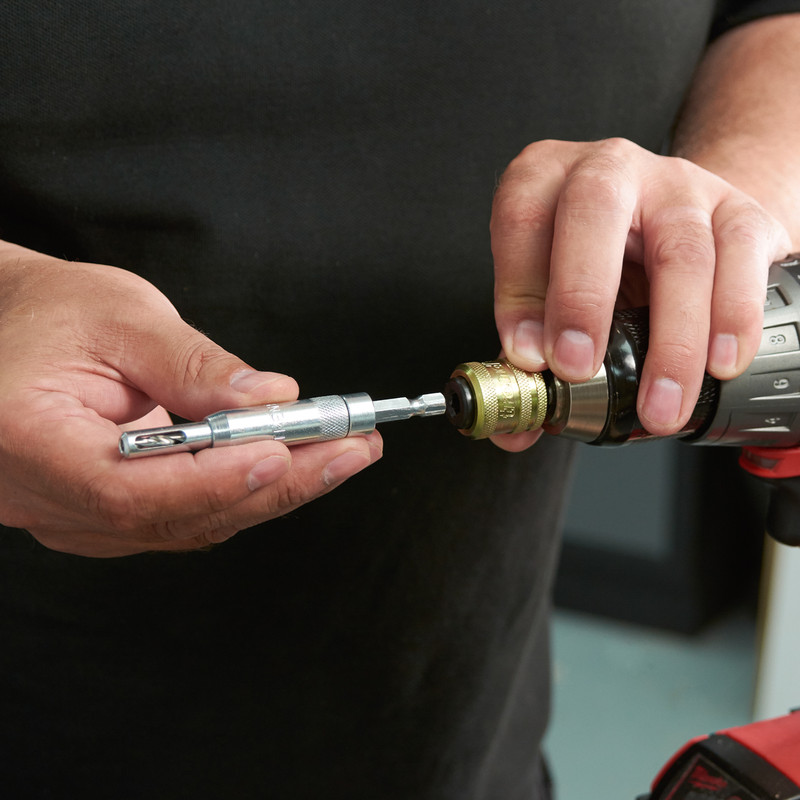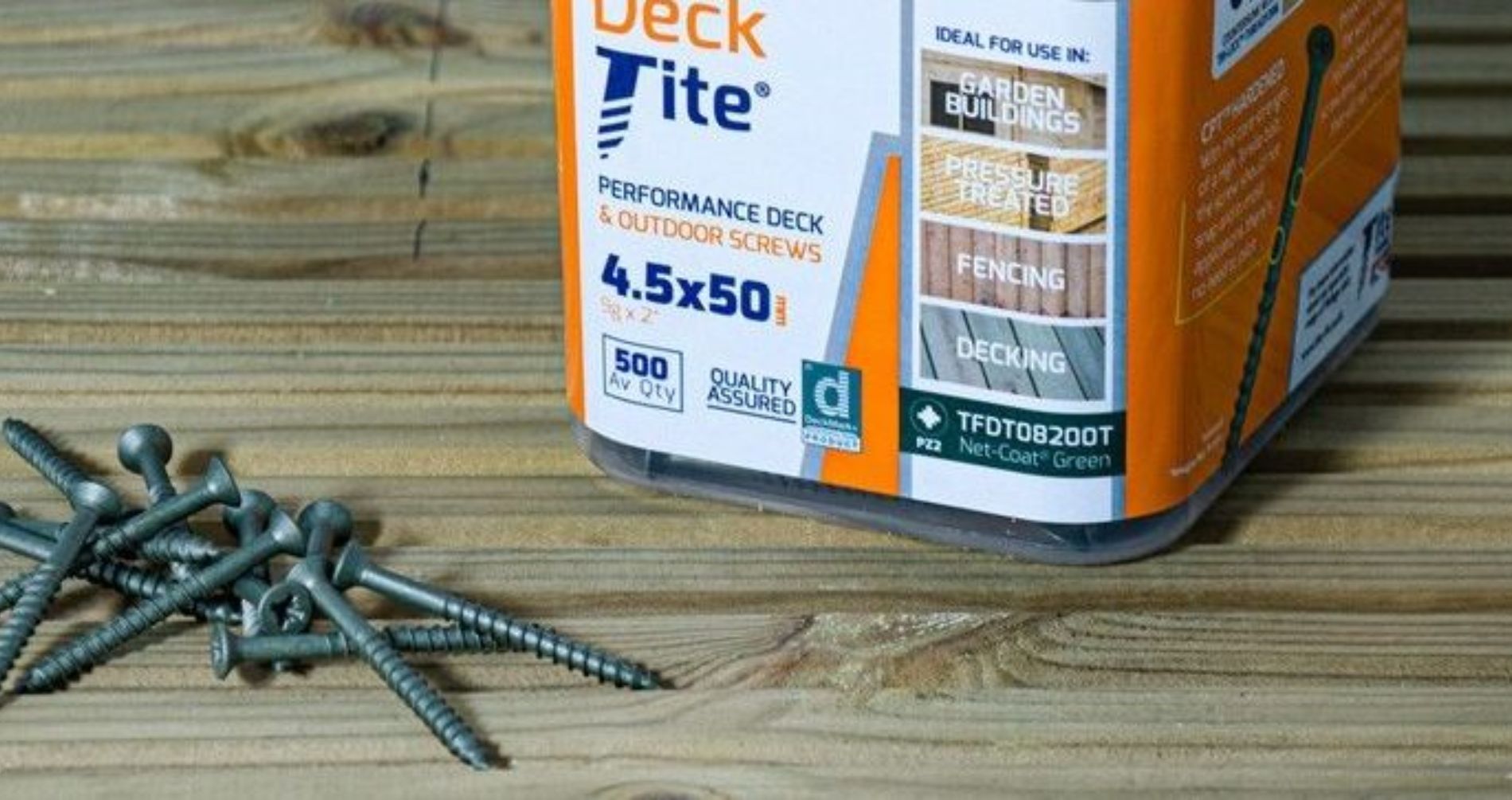Buying your first drill? Or looking to add to your toolkit? Here at Toolstation, you’ll find many types of drills and drivers for any task, surface and situation.
Whether you're drilling into brick or other similar material you'll need to choose the right type. Finding the best drill for you not only depends on the material you're drilling into but also how often you're planning to use it and your budget.
So, it's important to have the right drill for the task at hand. If you're drilling into harder surfaces like masonry or concrete, you'll want something high-powered such as an SDS drill. On the other hand, if it's a simpler job of driving screws into soft wood, then a regular drill driver would be ideal. Once you've chosen, to get the most out of your new drill, you'll need to the right type of drill bit too.
Types of Drill

Drill Drivers
Drill drivers, simply put, ‘drill’ holes and ‘drive’ screws without any hammer action. This makes them suitable for drilling into tiles, wood, plastic, thinner metal, and other soft materials. They tend to have a two-speed gearbox – with the faster speed for drilling, and the slower speed for more controlled and precise screwdriving.
Drill drivers are lightweight and usually more budget friendly compared to other types of drills. They're perfect for smaller DIY jobs such as hanging pictures or installing shelves, but they can also be used in various trade applications like kitchen fitting. They’re versatile too – with their chucks accepting a range of drill and screwdriving bits to help you tackle different tasks and materials.
Because they don’t have a hammer impact setting, drill drivers aren’t suitable for drilling into masonry. They also have lower rotational power (torque) than other drills and impact drivers – so you’ll need to apply more pressure when drilling or screwdriving.
Advantages
-
Lightweight, quieter and lower cost than combi drills
-
Chuck accepts a range of drill bits
-
Controlled and precise driving
Things to Consider
-
Not suitable for drilling masonry
-
Lower torque means pressure may be needed to drill and drive
-
Vibrations from the machine can be intense
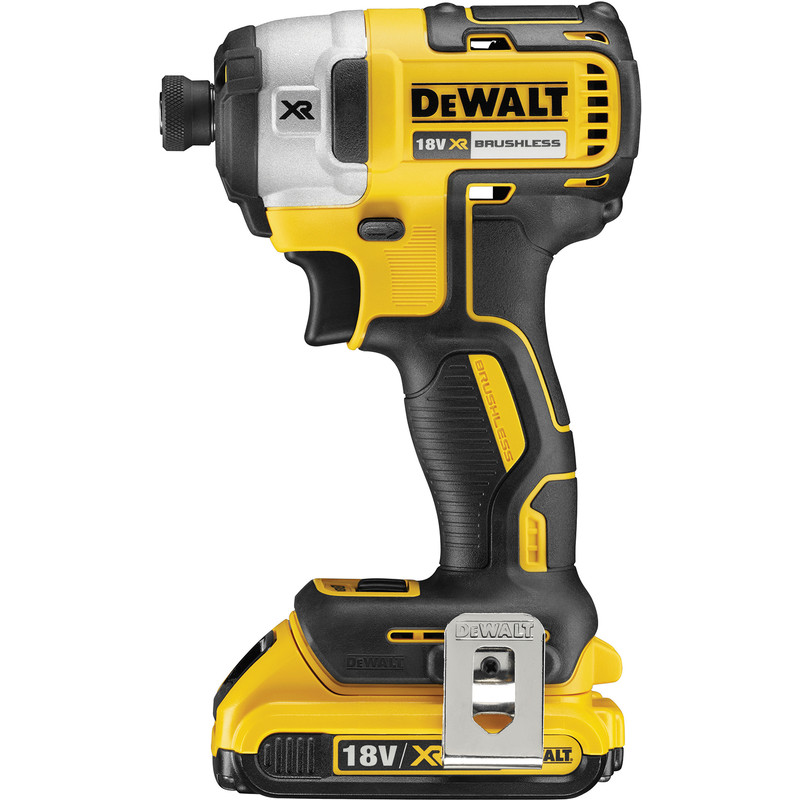
Impact Drivers
Impact drivers are mainly used to drive in and remove screws, bolts and other fasteners. They feature a ¼” hex bit holder instead of a standard chuck for use with small screwdriver bits. Impact drivers offer high levels of rotational force (torque), and use bursts of power when they feel resistance – allowing them to drive long, wide screws into tough materials.
Impact drivers are lightweight, and there's minimal kickback because the high torque can overcome resistance from the motor – meaning less risk of wrist injuries than when using a traditional drill. They’re also very compact, reducing their weight and allowing you to get into tight spaces.
Impact drivers are only recommended for driving. They can be used for drilling, but they’re not as effective as traditional drills. Some impact drivers have a single high torque level – meaning smaller, delicate screws could get damaged. Their high-power can also wear down regular screwdriver bits quickly, meaning you’ll want to consider specific impact driver bits.
Advantages
-
Easily drives screws in and out of tough materials
-
Compact & lightweight for hard-to-reach areas
-
Minimal kickback – less risk of wrist injury
Things to Consider
-
High torque could damage delicate screws
-
Regular screwdriver bits are worn down quickly
-
Chuck can only hold hexagonal drill bit shanks
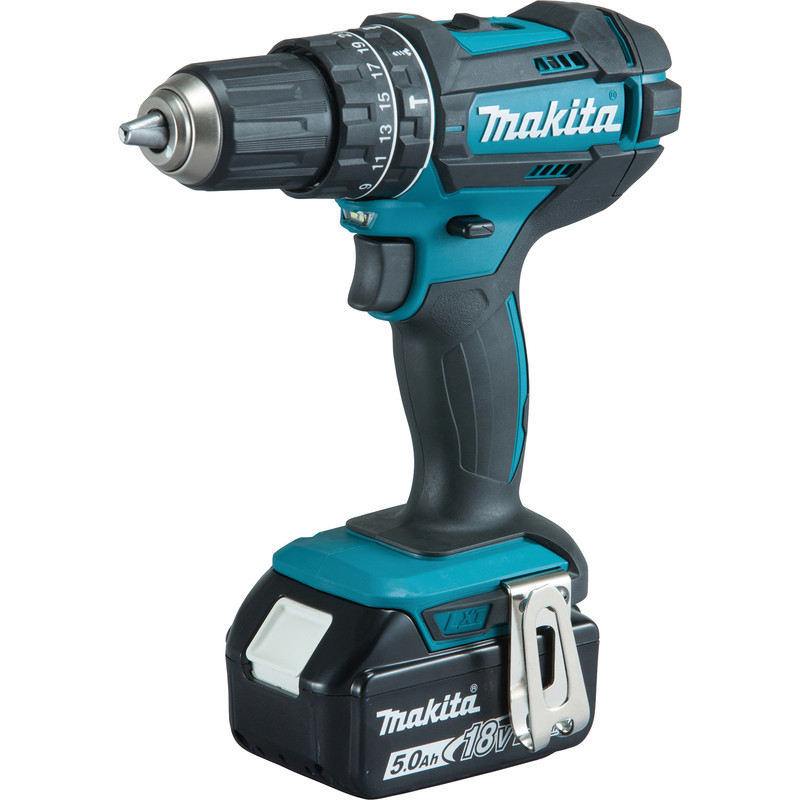
Combi Drills
Combi drills offer three functions in one. Like drill drivers, they have driving and drilling modes for smaller jobs, as well as a hammer drilling mode for heavy-duty work and masonry.
Combi drills have high-power motors and robust gearboxes, making them great all-rounders for both DIYers and tradespeople. Because of their powerful motors, they’re also suitable for use with larger accessories such as flat bits and wood auger drill bits, further increasing their versatility.
However, the highly versatile combi drill can fall short when drilling into really hard surfaces like concrete. You’ll also find they’re noisier and heavier than standard drill drivers because of their greater functionality.
Advantages
-
Versatile and high-powered all-rounder
-
Able to drill into brick and metal
-
Suitable for large diameter drill bits
Things to Consider
-
Limited for drilling into concrete
-
Noisier and heavier than drill drivers
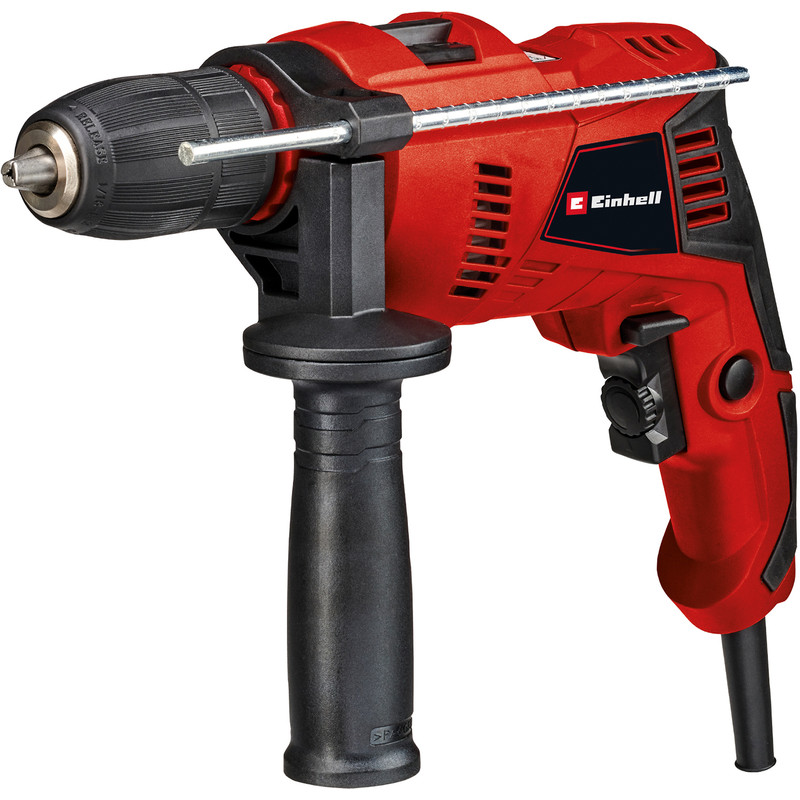
Percussion Drills
Percussion drills, also called hammer or impact drills, use a forward hammering action while rotating to make thousands of beats per minute (BPM) – allowing them to drill through tough materials like masonry and brick with ease. Like regular drills, this rotating hammer action reduces the chance of stress cracks forming in the surface.
They’re effective for masonry drilling, such as into stone and brickwork, and have variable speeds so you can drill slowly and precisely when you start drilling. Hammer drills are high-powered and durable, but can also be small and light – making drilling in confined spaces easier.
As percussion drills only have a hammer drill setting, they’re not as versatile as combi drills or drill drivers, which can also be used for driving in screws and regular drilling into soft or delicate materials.
Advantages
-
Makes quick work of masonry drilling
-
Robust and durable
-
Small and light – reducing user fatigue
Things to Consider
-
Not as versatile as drill drivers or combi drills
-
Corded – less convenient for some jobs
-
110 volt types need step-down transformers to use

SDS Drills
SDS drills, also known as Slotted Drive System drills, use a piston-driven hammer action to fire the bit backwards and forwards in a concentrated motion. This piston-driven hammer action delivers far more power than percussion drills, allowing SDS drills to tackle the most difficult jobs – including drilling through brick, masonry and concrete.
Not only can SDS drills make precise holes in concrete, they can also be used for chiselling into hard surfaces. This makes them an ideal demolition tool that can work quickly to remove layers from masonry.
Their power is reflected in their higher price tag, and as SDS drills are mainly designed for drilling masonry, they’re often only used by tradespeople. When using an SDS drill, you’ll need to use specific SDS drill bits, because standard drill bits cannot be safely or effectively used.
Advantages
-
Able to drill through really tough materials
-
Can drill deeper holes than other types
-
Less pressure needs to be applied
Things to Consider
-
Higher price tag to reflect power and versatility
-
Need to use specific SDS drill bits
-
Larger and heavier than other drills
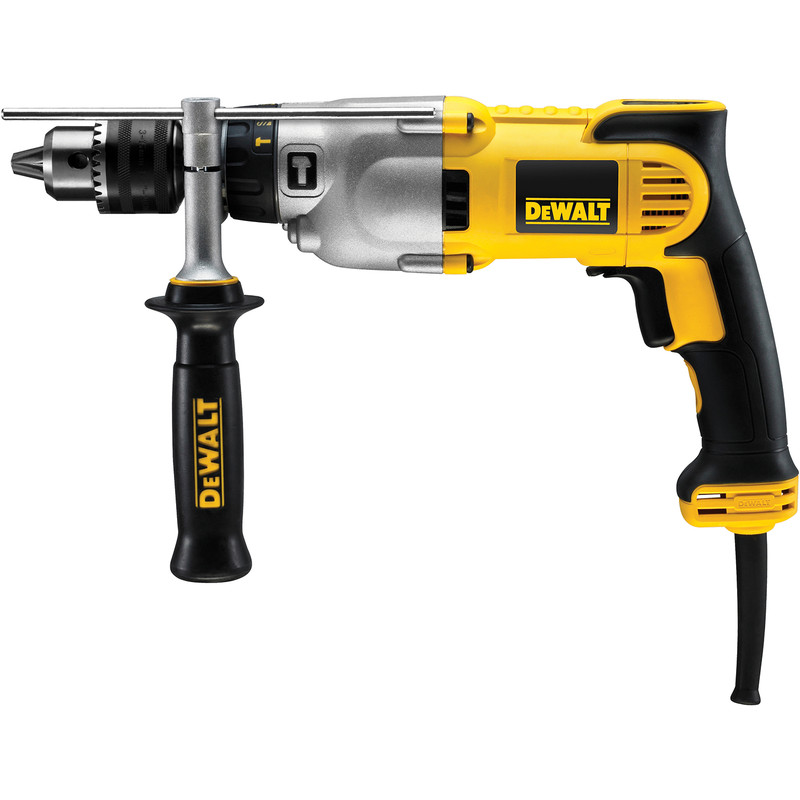
Diamond Core Drills
Diamond is the hardest material in the world – so it makes sense why you’d want to use diamond core drills for heavy-duty jobs. They make large, precise cylindrical holes, such as for ducts, wiring or pipework. They make quick and easy work of drilling through hard materials such as concrete, brick or ceramic tiles.
Compared to other high-powered drills such as combi and SDS drills, they’re quieter and often compact. Because of the strong diamond core, they can cut really precise holes into any material without much mess.
Be aware that, if you hit some resistance, kickback when using a diamond core drill can cause injury. Additionally, specific core drill bits are more expensive than traditional bits because of the strength from the diamond.
Advantages
-
Makes quick work of drilling hard materials
-
Diamond drill bits make very precise holes
-
Quiet and compact compared to SDS and combi drills
Things to Consider
-
Kickback from motor resistance can be intense
-
Diamond core drill bits have a higher price tag
-
Requires regular cleaning to remove dust
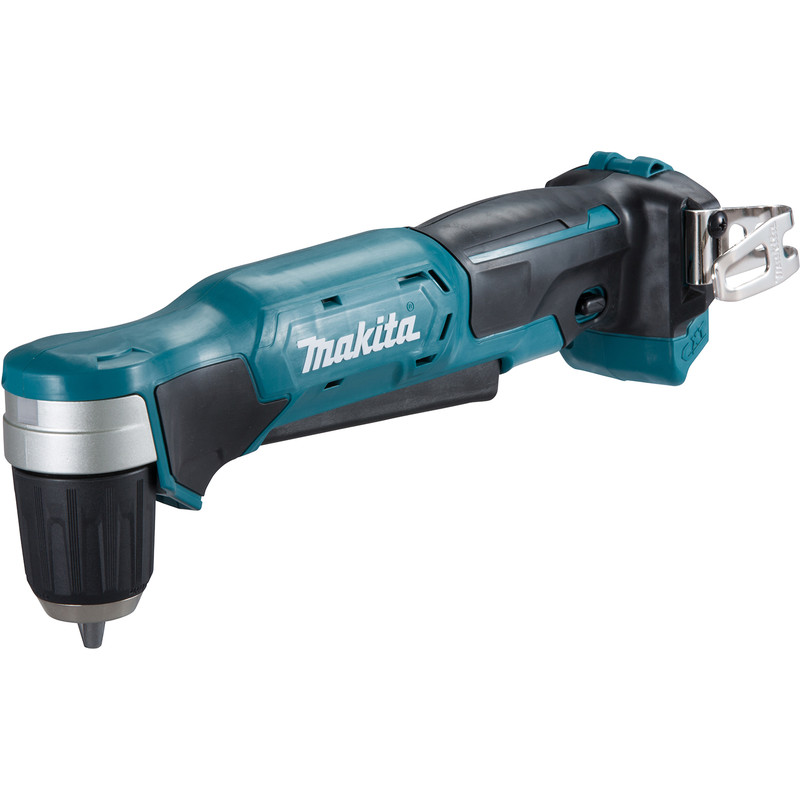
Right-Angle Drills
Looking to drill in tight or hard-to-reach spaces? Right-angle drills are a great choice because they have a reduced head length and are lightweight. The head is set at a 90 degree angle to the grip so you can drill inside kitchen cabinets, floors and car engines with just one hand.
They’re generally cordless, making them ideal for use anywhere, and their compact and comfortable design offers greater control to precisely and neatly drill holes straight on.
Buying a right-angle drill, whilst an excellent investment, does mean adding yet another power tool to your arsenal. For less-regular users, you can find cheaper angle attachments instead of buying a whole new drill.
Advantages
-
Easily get into tight and hard-to-reach spaces
-
Ergonomic design for one-handed drilling
-
Greater control for straight and precise drilling
Things to Consider
-
Extra expense on top of existing drill
-
Cordless types have a limited battery life
Corded vs. Cordless Drills
Cordless Drills
Cordless drills are powered by a built-in battery. They’re convenient because you can take them anywhere and know you’ll always have power.
They’re not limited by the length of a cable, meaning they’re also ideal for hard-to-reach drilling jobs.
If you have a lot of drilling to do, you’ll want to consider carrying an extra battery to avoid waiting for your drill to recharge when you’re on a job.
Advantages
-
Take a cordless drill from job-to-job
-
Not limited by cable length
Things to Consider
-
Bring an extra battery along with you
-
Can be lower power and torque than corded drills
Corded Drills
Corded drills get power from the mains supply. The perks of a corded drill are consistent, high-powered torque and a reliable drilling and driving action.
You also don’t need to wait for them to charge up or think about carrying a spare battery around!
However, they require a power supply nearby making them less convenient to take from job-to-job.
Advantages
-
No battery means they’re lighter and more compact
-
Higher power and more consistent torque
-
Reliable drilling and driving at a lower price
Things to Consider
-
Require a nearby power supply
-
Cables can create a tripping hazard
Brushed vs. Brushless Motors
Brushed Motors
Brushed motors work using carbon brushes which connect with electromagnets to transfer an electric current – this creates an electromagnetic field which rotates the motor.
This is a simple design and brushed motor drills therefore have a lower price tag, making them ideal for DIYers buying their first drill.
However, the carbon brushes are subject to friction when they rotate – generating heat and reducing battery and tool life.
Brushless Motors
Brushless motors, on the other hand, use a rotating permanent magnet, instead of carbon brushes. This means the motor lasts far longer because there's no friction wearing parts down.
Brushless types are often more powerful than their brushed counterparts and, without friction, the efficiency is much better because more of the energy is transferred to the motor.
Brushless motors tend to be more expensive than brushed motors because of their low maintenance and high power.
Key Drill Features
Chucks
A chuck is a device on the head of a drill which holds drill bits and other accessories for drilling, screwing and even mixing. It’s tightened and loosened to release and secure the drill bits.
You’ll find keyed, keyless and hybrid chucks. Keyed chucks are loosened and tightened using a key – adding extra torque for heavy-duty uses.
Keyless chucks are loosened and tightened by hand or when torque is applied – they’re really easy to use and you won’t risk losing the key.
Hybrid chucks are a combination of the other two – it automatically tightens around the drill bit, but has a keyed part to offer more grip and torque support.
Variable Speed
Drill speed is shown in RPM, or revolutions per minute. When you’re buying a drill, you’ll see the maximum drill speed referred to as ‘no-load speed’ – this is the speed if you were to just let the drill rotate in the air.
Some drills only have a single speed setting, which is suitable for lots of simple DIY tasks. Higher-cost drills may have more speed settings, making them more versatile and suitable for drilling into a range of materials.
Generally higher speeds are best for harder materials such as metal, and softer materials such as wood should be drilled into at lower speeds to maintain control.
Torque
Torque is the amount of rotating force the motor produces, and is measured in newton metres (Nm).
Generally, small screwdriver tasks need a lower torque, and heavy-duty jobs will require a higher torque.
Drills with a higher price tag often have adjustable torque so you can use the same drill for different purposes.
Drill Bits
Drill bits are placed on the end of drills and tightened into the chuck. They’re designed to drill holes in a variety of different materials.
There are countless types of drill bits, but the most common types are: High Speed Steel (HSS) drill bits, Tungsten Carbide Tip (TCT) bits, SDS drill bits and screwdriver bits.
It’s important to check which drill bit is recommended for your type of drill, because some drills, like SDS drills, are too powerful to be used with standard bits.
Drilling Capacity
Drilling capacity means the maximum diameter of a drill bit that the chuck can hold. Generally, the higher the drill power, the greater the diameter of a hole that can be drilled.
Drilling capacity will vary based on the power of the drill, the drill bit, and the type and density of the material being drilled.
Reverse Function
If a drill has a reverse function feature, this means it can drill and drive clockwise and anti-clockwise.
This feature is ideal if you need to remove difficult screws, as well as backing out of holes you’ve drilled into a wall.
LED Lights
A number of drills will feature LED lights. These make it easier to work in poorly lit or tight spaces.
For example, if you’re likely to drill in a kitchen cupboard you may want to consider an LED light so you can clearly see where you’re drilling.




